Table of Contents
Innovation experts agree that the Business Model Canvas is the best tool for understanding the intricacies of how a business functions. That makes understanding how to use the Business Model Canvas a top priority for anyone looking to spur the growth of their current business or plan the beginning of a new one.
In this article, we discuss the various pieces of the Business Model Template and how they can be used to reflect on a company’s advantages and potential challenges. We’ve also included some sample templates completed to match the business models of some well-known, successful companies.
Overview of Business Model Canvas Building Blocks

Designed by: Digital Leadership AG – Building on the Work of Alexander Osterwalder
The Business Model Canvas is a complex diagram of all the different pieces of your company, but that complexity is deliberate. It pushes you to consider elements and areas of your business that often go unnoticed until it’s too late.
Below are the building blocks you’ll find in the Business Model Canvas, along with the sub-sections within each one.
For a comprehensive exploration of the Business Model Canvas, delve into our book, “How to Create Innovation.” This resource not only provides detailed insights into the intricacies of the Business Model Canvas but also offers practical guidance on leveraging this powerful tool to foster innovation within your business. Whether you’re a seasoned entrepreneur or just starting, our book equips you with the knowledge and strategies to effectively employ the Business Model Canvas for sustained innovation and success in today’s dynamic business landscape.
(1) Operating Model
The concept of an Operating Model Canvas was originally developed by Andrew Campbell and his colleagues. We have developed an iteration of it that will consider additional aspects and that is more geared towards innovation. If you want to learn more on the topic, please consider their book entitled Operating Model Canvas.
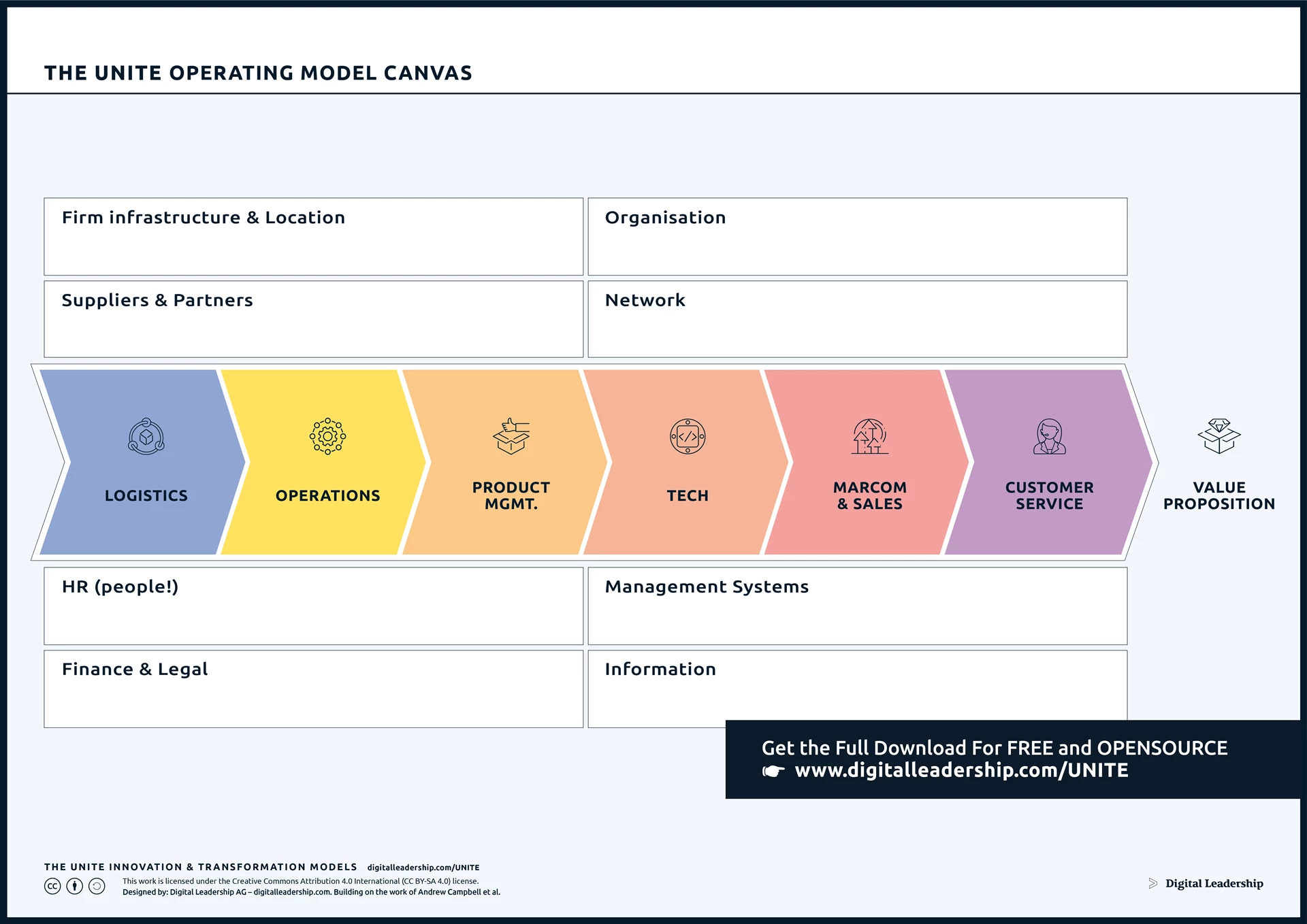
Designed by: Digital Leadership AG – Building on the Work of Andrew Campbell at al
Your Operating Model is how you put your Business Model into action.
- Value Chain: This section describes your key value-creating activities. There may, in fact, be several key value chains that keep your business moving. Here, you consider what needs to be done in order to maintain operations, who’s responsible for those activities, and the roles customers do or could play in them.
- Key Resources: Here you list the assets and capabilities you need in order to create your value proposition. You should understand which of these resources is part of your core business, which truly supports differentiation, and which should be insourced. Other resources that aren’t as central or as necessary may be found less expensive elsewhere.
- Key Partners: This section of your Operating Model Canvas considers the other people and businesses that keep your operation running. You will list what you get from these key partners, how necessary of a role they play, and where your supply chain might need diversification.
(2) Value Model
At the centre of the Business Model Template, you find the Value Model. The Value Model is first of all defined by the Value Proposition(s) you offer. The Value Model also covers the supporting Product System, i.e., the complementary products and services which you offer in support of your core product. Think about accessories, related services and guarantees, and whatever allows you to up and cross-sell.
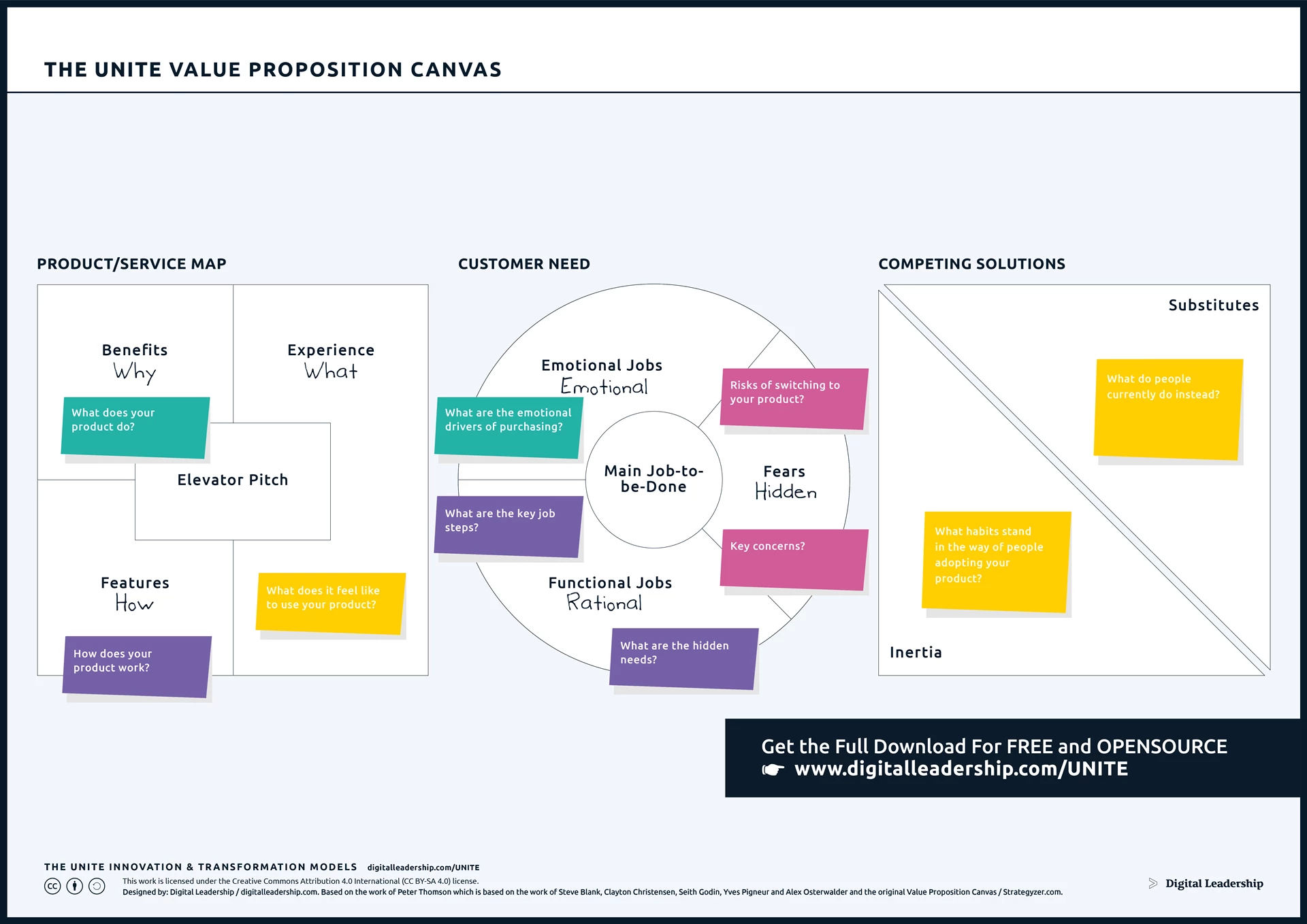
Designed by: Digital Leadership AG – Based on the work of Peter Thomson which is based on the work of Steve Blank, Clayton Christensen, Seith Godin, Yves Pigneur and Alex Osterwalder and the original Value Proposition Canvas
- Value Proposition: Here you list the value you bring to your customers, partners, and stakeholders. Consider individual customer segments and the products or services you offer to each of them.
- Product System: This section asks you to think about possible complementary products and services that you could offer that would enhance the value you provide. Think of the possibility of building an entire ecosystem that connects your company more deeply to customers while fending off competitors.
(3) Experience Model
The Experience Model defines the ways in which your customers experience your Value and Service Models. It is wise not to leave this to chance; experience often generates the bulk of the value, whether due to convenience (Netflix) or luxury (Rolex). The Experience Model covers your brand, customer relationships, customer engagement, and marketing.
- Brand: In this section, you describe your brand architecture and how a customer would experience your brand across everything you offer. Think about how you see yourself along with how others see you.
- Customer Relationships and Engagement: Describe the relationship you have with your customers and how they interact with your company. Think about options such as self-service, personal assistance, communities, or Single Points of Contact.
- Distribution Channels: List the ways you are currently reaching customers, along with the ways you wish you were reaching customers. Think about how much each channel costs, and where you can get the most return on your investments.
(4) Service Model
A Service Model defines the differentiating, core, and supporting services delivered by an organization. When working on your Service Model, think about your service strategy and your core competitive and differentiating services. Also consider Service-Level Agreements, service channels, and possible self-service.
(5) Cost Model
Your operations drive your efforts and thus costs. Once you understand your Value Chains, Key Resources, and Key Partners, it should be relatively easy to identify the key cost drivers and potential Opportunity Spaces for innovation. For any Business Model, managing costs is critical, but some Business Models are designed entirely around low-cost structures.

Related Articles:
- Key Activities – Value Chain Building Block in Business Model Canvas
- Key Partners Building Block of the Business Model Canvas
- Key Resources Building Block in Business Model Canvas
- Cost Structure in the Business Model Canvas
(6) Revenue Model
Revenue Streams outline how you earn money. In this section, consider the price you think customers are willing to pay for your products or services. Pricing can often be a source of differentiation! Pricing mechanisms can include auctioning, bargaining, fixed-list prices, market- or volume-dependent prices, or yield management.
A Business Model can also involve transactional revenues resulting from one-time customer payments (e.g., a sale) or recurring payments (e.g., a subscription). In the context of the Revenue Model, think also about any other benefits you may be getting. Not all value is monetary!
Related: Revenue Streams in Business Model Canvas
Real-Life Business Model Canvas Examples
The general public doesn’t have access to major companies’ official Business Model Canvases, of course, but it can be beneficial to consider how representatives from those companies might complete one.
You may consider completing an entire Business Model Canvas for a company of your choosing as practice for completing your own. Another exercise to consider is completing two canvases for two different companies, one that’s been successful and one that failed. Listed below are four famous companies and a discussion of how some sections of a Business Model Canvas might be completed for each.
Example (1): Apple
At the simplest level, Apple is dedicated to selling its products – computers, iPhones, etc. – and its services. Most of their revenue comes from phone sales.
But most tech-savvy people understand that Apple’s brand placement is vital to the company’s success. They’ve positioned their products as desirable, fashionable, and cutting edge. Keeping their products connected to “cool” is important to their overall business model.

Example (2): Airbnb
Airbnb generates revenue by facilitating a service that lets people access another service. The company’s money comes a little from the host and a little more from the guest. The platform connecting the two different groups is the entire business, which means their technology infrastructure is vital to their operations.
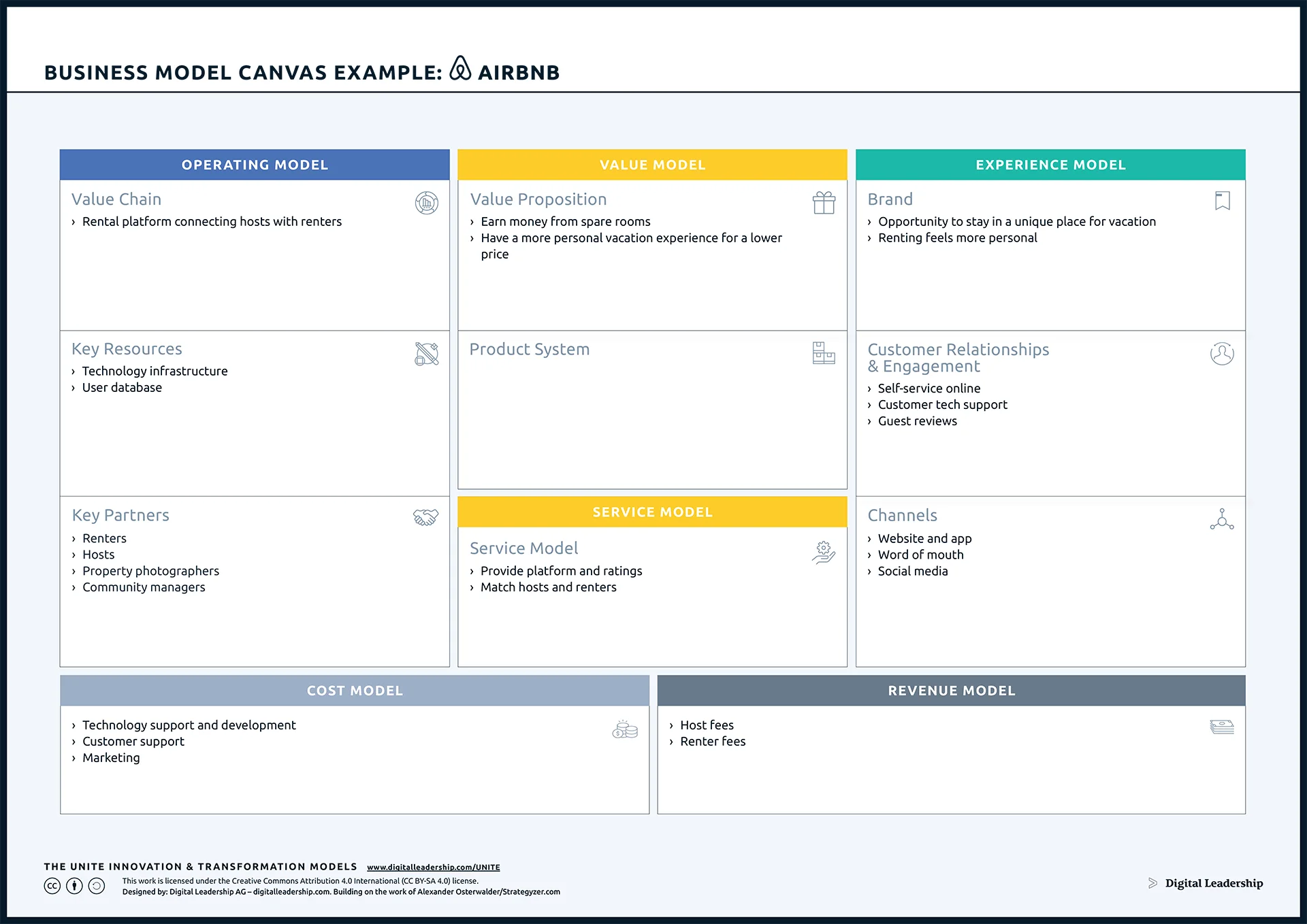
Example (3): Uber
Like Airbnb, Uber uses the platform service model to connect customers to providers, in this case, drivers. Their technology infrastructure makes their business operations possible.
In both platform service examples, both companies can look to their technology to expand their products and services. They would both benefit from leveraging their massive rolls of service providers and customers to find new options to deliver revenue generation.

Example (4): Netflix
Netflix has always used a subscription-based business model, starting with physical DVDs and then transitioning to the streaming platform with which most of us are familiar. Recently, Netflix has begun to leverage its success as an entertainment distributor to try its hand at becoming an entertainment creator.
An important element of their business model is the customer experience. As such, improving and developing that experience attracts a lot of the company’s attention and resources.

Steps to Draft Your Own Business Model Canvas
“A love for bad drafts” is one of Digital Leadership’s most important principles. Most people find it easy to criticize a draft, but they often struggle to come up with a draft in the first place and are afraid to share it until they think it is really “finished.” Our “love for bad drafts,” therefore, has the goal of getting to a first version very quickly, which then allows iteration. Depending on the complexity of the task, we typically allow between 20 minutes and 2 hours to come up with an initial version. Then, improving the “bad draft” is easy, and a cycle of iteration begins.
Step One: Define the Business’s Purpose
Begin with your overall business purpose (Reason) for existing. Don’t worry about reaching people yet, and don’t worry about making money. Think big and broad. What will you champion?
Related: Identifying your Business Purpose | Why are you even here?
Step Two: Define Customers and the Value Proposition
List your ideal customers: who are they and what do they need? In your Value Proposition Canvas, sketch out how your business’s services and products will impact your customers’ lives. How are you going to make something easier or meet their needs in a new way?
Step Three: Define the Experience You Provide
Consider how your customers will perceive interacting with your company. List where and how customers will find you and use what you’re offering. What overall feeling are you hoping your customers get by experiencing your products and services?
Step Four: Define Key Resources and Partners
Move into drafting a list of the materials and vendors you’ll rely upon for your operations. You probably will already be recognizing which resources you need for your core operations. What can be trimmed away? What is too important to leave to someone else?
Related Articles:
- Key Resources Building Block in Business Model Canvas
- Key Partners Building Block of the Business Model Canvas
Step Five: Track the Money Coming in and Going Out
Before completing any leftover sections of your canvas, consider where you’ll generate revenue and where you’ll incur costs. Don’t forget: not all revenue streams are money (and neither are all costs!). How is your revenue collected? What are the plans for developing repeating income?
Conclusion
We find that the power of a Business Model Canvas lies in its ability to force us to re-vision how our business will work. Because a business has so many moving parts, it can be difficult to isolate and analyze each one. As a result, opportunities for development and innovation are easily overlooked. The Business Model Canvas ensures that you’re taking proper advantage of all your opportunities.
Related: Identifying Hidden Market Opportunities for Innovation through JTBD
Frequently Asked Questions
The Business Model Canvas helps you describe, challenge and innovate the Business Model of an organization, and it does this quite well, at least on a high level. When you design a Business Model, it is useful to lay out the assumptions or hypotheses that animate your business in a structured way. A Business Model Canvas helps you to do just that. The canvas helps you to easily understand your current Business Model, design a new one, see if you have missed anything important, and compare your model to others.
A Business Model clearly describes how a company will make money by bringing value to its customers. Typical Business Models include target markets, market needs, and how a company will meet those needs. Its purpose is to serve as a tool for quickly explaining how a business’s many pieces will successfully serve its customers’ needs.
When you analyze a business model, you should evaluate a number of things:
How will the business generate income?
How will the business solve a customer’s needs?
Can solutions be delivered at acceptable costs?
What resources are necessary for the business’s core activities?
What happens to the business if circumstances change?
A Business Model Canvas can help you analyze a business model because it clearly visualizes the answers to these important questions.
The UNITE Business Model Framework: A Framework for Innovation Success
How to Create Innovation includes a number of canvases that focus on value creation and finding the right business model to meet your customer segment and customer needs. The framework is built to inspire drastic changes that help you find a competitive advantage. Our hope is that your company grows through business model innovation, and so we again encourage you to look deeper into our website and the book.
Here is a summary of the key ingredients of the Business Model Framework:
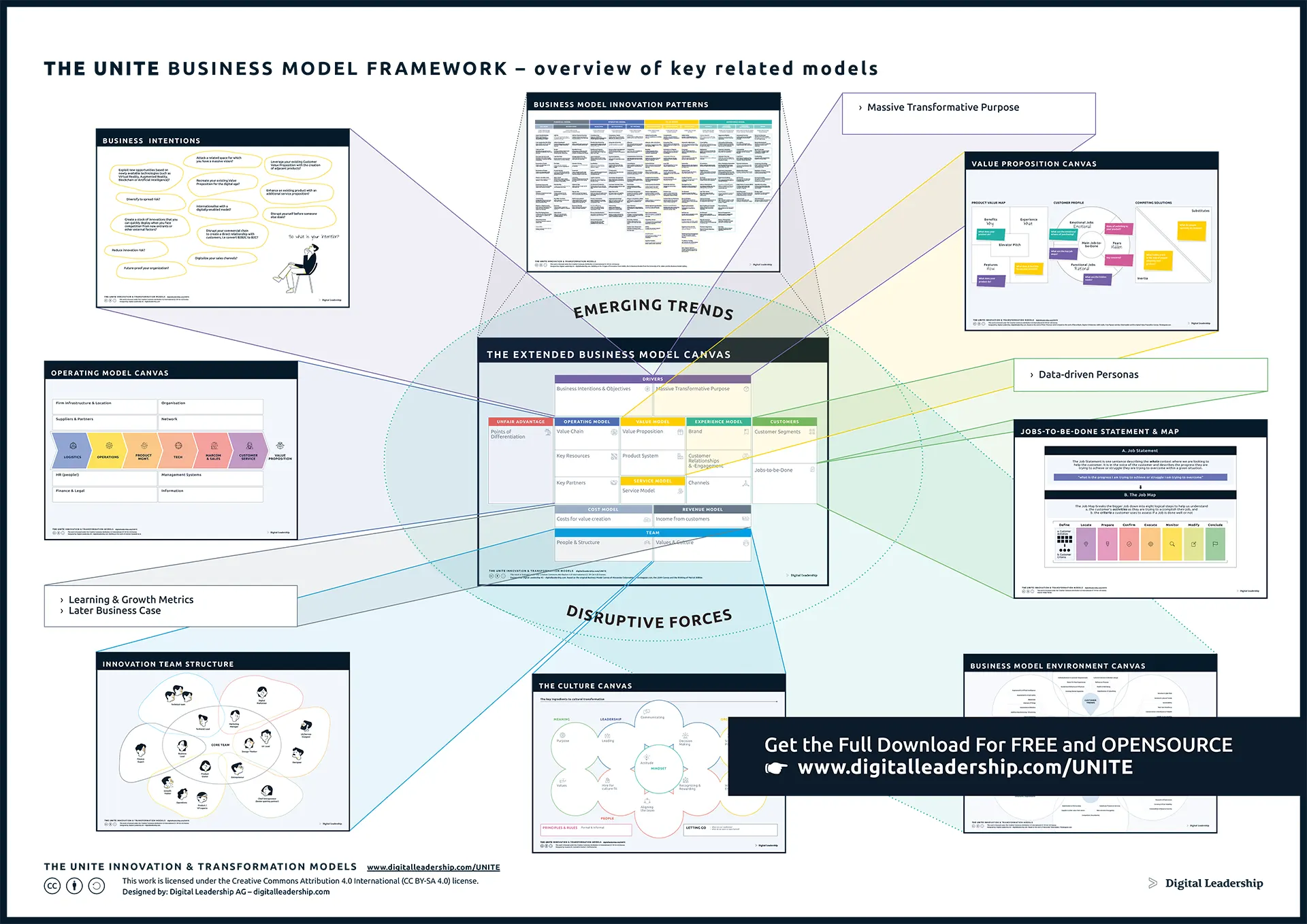
Designed By: Digital Leadership AG
Business Models
The centerpiece is the Business Model Canvas, which covers the six main areas of a Business Model (the Operating, Value, Service, Experience, Cost, and Revenue Models).
The eXtended Business Model Canvas adds the immediate business context, including Business Drivers, customers, and the team, as well as the Unfair Advantage.
Detailed Models
A Business Model can be broken out into numerous aspects. Depending on what challenges you face, you can zoom in on your area of interest using an appropriate tool or canvas:
- Your Business Intention and objectives as well as your Massive Transformative Purpose summarize your drivers and give direction to what you do.
- The Value Proposition Canvas details the central components of your offering (the product or service).
- To dig into your Customer Segments, work with data-driven Personas.
- The JTBD Customer Job Statement and Job Map frame the JTBD of your customers.
- The Business Model Environment puts your Business Model in a market context composed of emerging trends and disruptive forces.
- The Innovation Culture Canvas helps you understand and consciously shape a culture that supports innovation.
- The Innovation team structure enables you to draft a team structure for your innovation initiative.
- Using learning and growth metrics, you can measure progress at the initial stages of development. These metrics help you focus on what really matters instead of creating a detailed business plan that will not really help you. Later on, you can expand the financial aspect of the Revenue and Cost Models with a full business case.
- The Operating Model Canvas helps you think through the Operating Model.
- Business Capability Map: A Practical Business Approach
- The Business Model Environment puts your Business Model in a market context composed of emerging trends and disruptive forces.
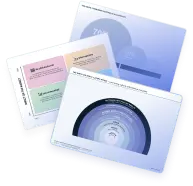
































 Book How to Create Innovation
Book How to Create Innovation